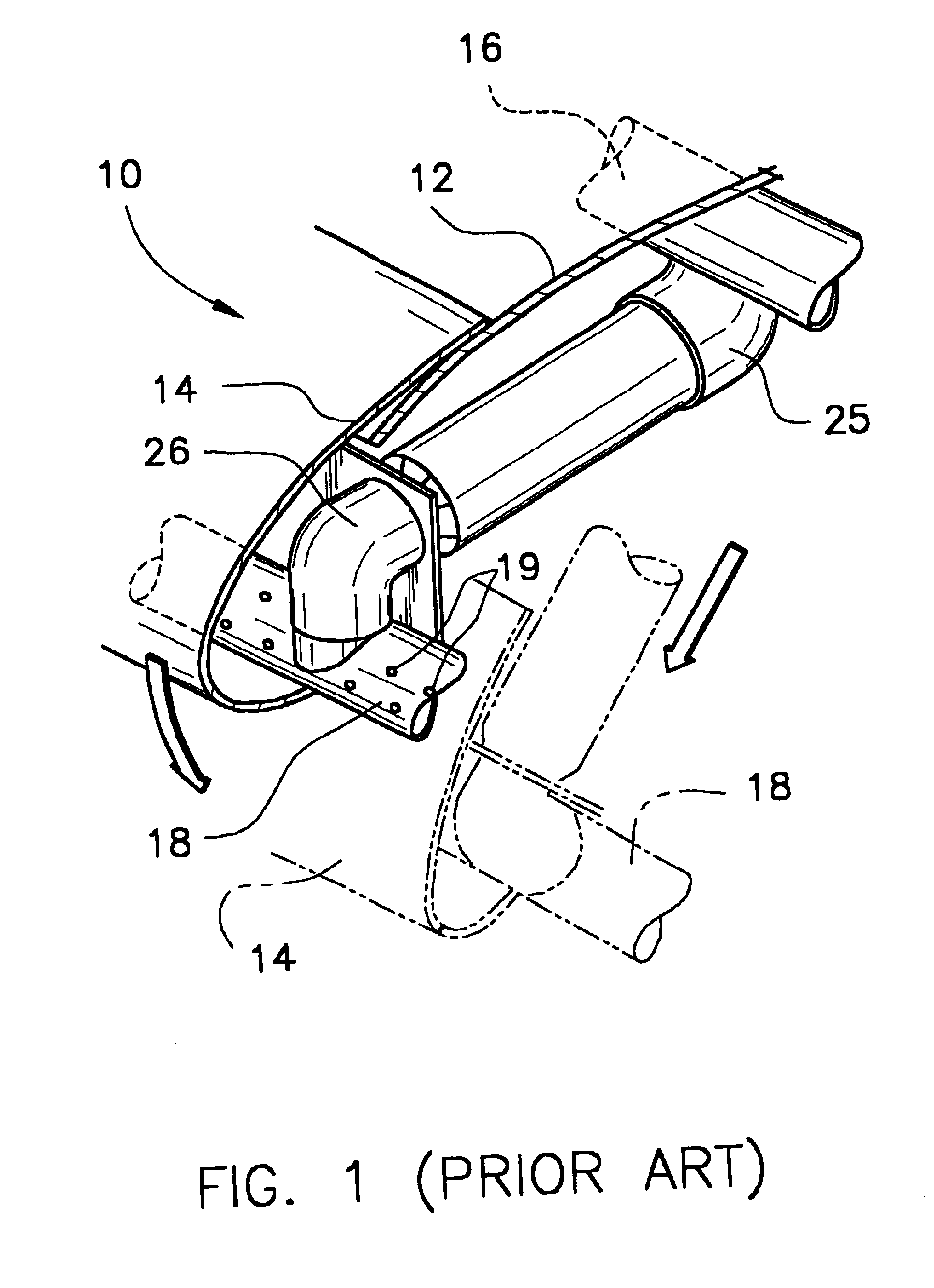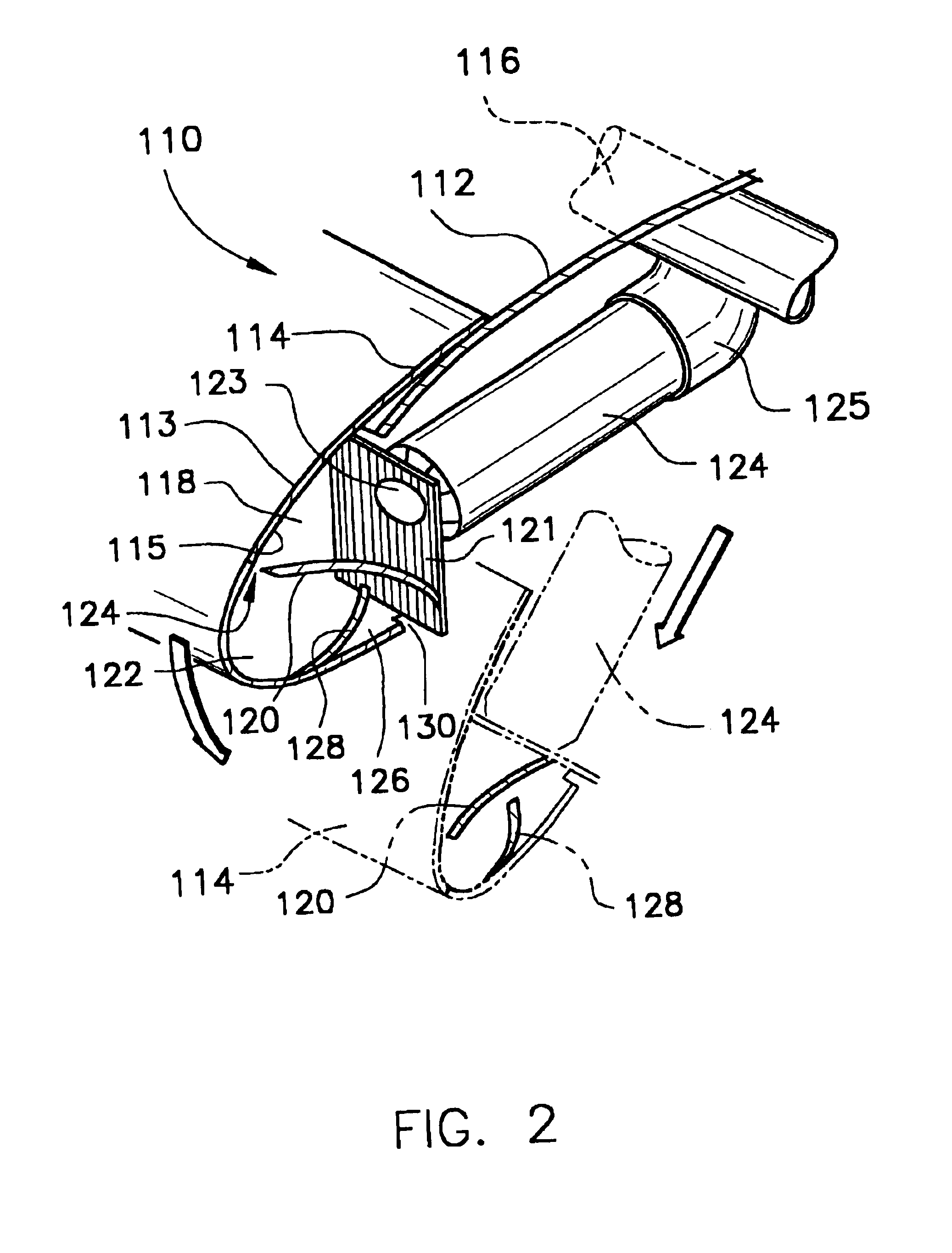Airfoil anti-icing assembly and method
a technology of airfoil and assembly, applied in the direction of de-icing equipment, machines/engines, hot gas positive displacement engine plants, etc., can solve the problem of attendant additional labor and material costs for the manufacture of systems employing such components
- Summary
- Abstract
- Description
- Claims
- Application Information
AI Technical Summary
Benefits of technology
Problems solved by technology
Method used
Image
Examples
Embodiment Construction
A computer modeling analysis of the invention was conducted using a computational grid generator (i.e. GAMBIT, a product of FLUENT, Inc., Lebanon, N.H.) and a two-dimensional (2-D) Navier-Stokes flow solver program (i.e. FLUENT, a product of FLUENT, Inc., Lebanon, N.H.).
The computational model was created using an unstructured, triangular mesh. The airfoil model is a 2-D cross-section of a leading-edge using NACA airfoil coordinates. This mesh was created using the grid generator GAMBIT. More detailed information about this grid generator is included in the GAMBIT User's Guide (FLUENT, Inc., Lebanon, N.H., May 1998). FIG. 6 displays a typical example of an unstructured mesh in an airfoil model generated in GAMBIT. These models used an average of 3000 nodes to define the grid.
Each airfoil model contained an inlet, outlet, and throat section. For consistency between all of the models, the ratio of outlet area to throat area used was set at a constant value of 6:1, while the ratio of t...
PUM
 Login to View More
Login to View More Abstract
Description
Claims
Application Information
 Login to View More
Login to View More - R&D
- Intellectual Property
- Life Sciences
- Materials
- Tech Scout
- Unparalleled Data Quality
- Higher Quality Content
- 60% Fewer Hallucinations
Browse by: Latest US Patents, China's latest patents, Technical Efficacy Thesaurus, Application Domain, Technology Topic, Popular Technical Reports.
© 2025 PatSnap. All rights reserved.Legal|Privacy policy|Modern Slavery Act Transparency Statement|Sitemap|About US| Contact US: help@patsnap.com



